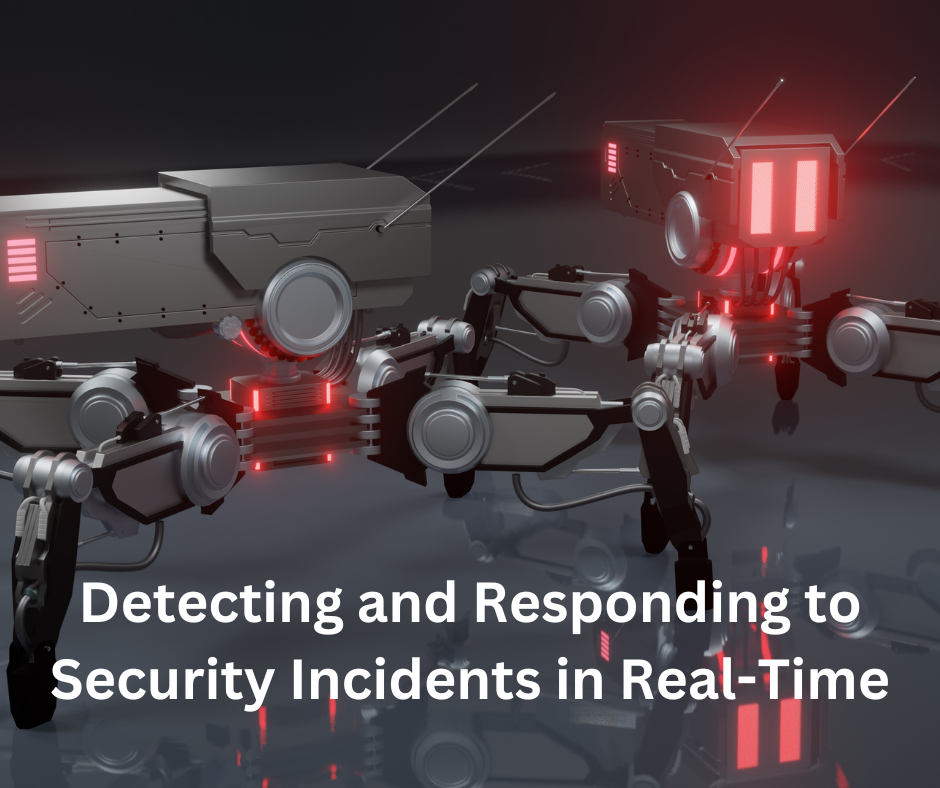Introduction
In today’s digital world, having strong cybersecurity measures is more important than ever.With the increasing sophistication of cyber threats, organizations must be prepared to detect and respond to security incidents in real-time. This approach not only minimizes potential damage but also ensures the integrity and confidentiality of sensitive data.
Understanding Security Incidents
A security incident is any event that threatens the confidentiality, integrity, or availability of an organization’s information assets. These incidents can range from minor breaches, such as unauthorized access attempts, to major attacks, like ransomware or data exfiltration.
Common Types of Security Incidents
-
Malware Infections: Malicious software is created to disrupt, damage, or gain unauthorized access to computer systems.
-
Phishing Attacks: Attempts to trick individuals into providing sensitive information by posing as trustworthy entities.
-
Insider Threats: Security risks that originate from within the organization, often involving employees or contractors.
The Importance of Real-Time Detection
Real-time detection is crucial for mitigating the impact of security incidents. The faster a threat is identified, the quicker it can be addressed, reducing potential damage and costs. Real-time detection enables organizations to respond proactively, rather than reactively, to threats.
Key Benefits of Real-Time Detection
-
Minimizes Downtime: Quick identification of threats allows for immediate action, reducing system downtime and maintaining business continuity.
-
Reduces Financial Losses: Early detection can prevent the loss of sensitive data, avoiding the financial repercussions associated with breaches.
-
Enhances Regulatory Compliance: Timely incident detection and response are often required by regulatory bodies to maintain compliance with data protection laws.
Tools and Technologies for Real-Time Detection
To detect security incidents in real-time, organizations rely on a variety of tools and technologies that continuously monitor systems and networks.
Intrusion Detection Systems (IDS)
An IDS monitors network traffic for suspicious activity and known threats, generating alerts when potential security incidents are detected. These systems can be network-based (NIDS) or host-based (HIDS).
Security Information and Event Management (SIEM)
SIEM systems collect and analyze log data from various sources within the organization. They provide real-time analysis of security alerts and enable centralized visibility into potential threats.
Endpoint Detection and Response (EDR)
EDR solutions monitor and respond to threats at the endpoint level. They detect malicious activity on individual devices, such as laptops and servers, and provide automated response capabilities.
Threat Intelligence Platforms
These platforms aggregate and analyze data from various threat intelligence sources. They provide real-time information on emerging threats, enabling organizations to stay ahead of potential attacks.
Best Practices for Real-Time Incident Detection
While tools are essential, effective real-time incident detection also requires adherence to best practices that enhance overall security posture.
Continuous Monitoring
Implement continuous monitoring across all systems and networks. This ensures that any unusual activity is detected immediately, allowing for a swift response.
Regular Threat Assessments
Conduct regular threat assessments to identify potential vulnerabilities within your infrastructure. Understanding your weaknesses enables you to strengthen your defenses against real-time threats.
Implementing Behavioral Analytics
Use behavioral analytics to establish a baseline of normal activity within your organization. Any deviation from this baseline can indicate a potential security incident, triggering further investigation.
Automating Incident Detection
Automation plays a crucial role in real-time incident detection. Automated systems can quickly identify and respond to threats, reducing the reliance on human intervention and minimizing response times.
Responding to Security Incidents
Once a security incident is detected, an immediate and effective response is essential to contain the threat and mitigate damage.
Incident Response Plan (IRP)
An Incident Response Plan (IRP) is a predefined set of procedures that guide the organization through the process of responding to a security incident. It should include roles and responsibilities, communication protocols, and steps for containment and recovery.
Key Components of an IRP
-
Identification: Confirming that an incident has occurred and determining its scope and impact.
-
Eradication: Removing the threat from the environment, such as deleting malware or revoking compromised credentials.
-
Recovery: Restoring systems to normal operations, ensuring that the threat has been fully neutralized.
-
Lessons Learned: Analyzing the incident to understand what went wrong and how future incidents can be prevented.
Real-Time Response Strategies
-
Incident Triage: Quickly assess the severity of the incident to prioritize response efforts. High-priority incidents should be addressed immediately.
-
Automated Responses: Utilize automated tools to perform initial containment actions, such as blocking malicious IP addresses or isolating infected endpoints.
-
Communication: Ensure clear and timely communication with all stakeholders, including IT teams, management, and, if necessary, external parties like law enforcement or customers.
Enhancing Incident Response Capabilities
To improve real-time incident response, organizations should focus on continuous improvement and integration of advanced technologies.
Regular Training and Drills
Conduct regular training and incident response drills to ensure that all team members are prepared to act swiftly and effectively during a real incident. These exercises help identify gaps in the IRP and improve overall readiness.
Leveraging Artificial Intelligence (AI)
AI and machine learning can enhance real-time detection and response by analyzing large volumes of data and identifying patterns that may indicate a threat. AI-driven systems can also automate responses, further reducing reaction times.
Collaboration and Information Sharing
Collaborate with other organizations and participate in information-sharing initiatives. Sharing threat intelligence and response strategies can enhance your ability to detect and respond to incidents in real-time.
Conclusion
Detecting and responding to security incidents in real-time is vital for protecting an organization’s assets and maintaining trust with customers and stakeholders. By leveraging the right tools, adhering to best practices, and continuously improving response capabilities, organizations can stay ahead of cyber threats and minimize the impact of security incidents. For those interested in bolstering their skills, Cyber Security Training in Delhi, Noida, Mumbai, Indore, and other parts of India can provide essential knowledge and practical experience in managing these challenges effectively.
Investing in real-time detection and response not only strengthens your security posture but also ensures that your organization is well-prepared to face the ever-evolving landscape of cybersecurity threats.

